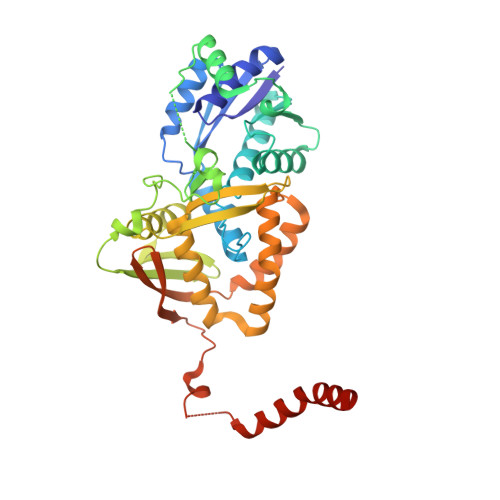Structures of argininosuccinate synthetase in enzyme-ATP-substrates and enzyme-AMP-product forms
Goto, M., Omi, R., Miyahara, I., Sugahara, M., Hirotsu, K.(2003) J Biol Chem 278: 22964-22971
- PubMed: 12684518
- DOI: https://doi.org/10.1074/jbc.M213198200
- Primary Citation of Related Structures:
1J1Z, 1J20, 1J21, 1KH3 - PubMed Abstract:
Argininosuccinate synthetase reversibly catalyzes the ATP-dependent condensation of a citrulline with an aspartate to give argininosuccinate. The structures of the enzyme from Thermus thermophilus HB8 complexed with intact ATP and substrates (citrulline and aspartate) and with AMP and product (argininosuccinate) have been determined at 2.1- and 2.0-A resolution, respectively. The enzyme does not show the ATP-induced domain rotation observed in the enzyme from Escherichia coli. In the enzyme-substrate complex, the reaction sites of ATP and the bound substrates are adjacent and are sufficiently close for the reaction to proceed without the large conformational change at the domain level. The mobility of the triphosphate group in ATP and the side chain of citrulline play an important role in the catalytic action. The protonated amino group of the bound aspartate interacts with the alpha-phosphate of ATP and the ureido group of citrulline, thus stimulating the adenylation of citrulline. The enzyme-product complex explains how the citrullyl-AMP intermediate is bound to the active site. The stereochemistry of the catalysis of the enzyme is clarified on the basis of the structures of tAsS (argininosuccinate synthetase from T. thermophilus HB8) complexes.
Organizational Affiliation:
Department of Chemistry, Graduate School of Science, Osaka City University, Osaka 558-8585, Japan.

















